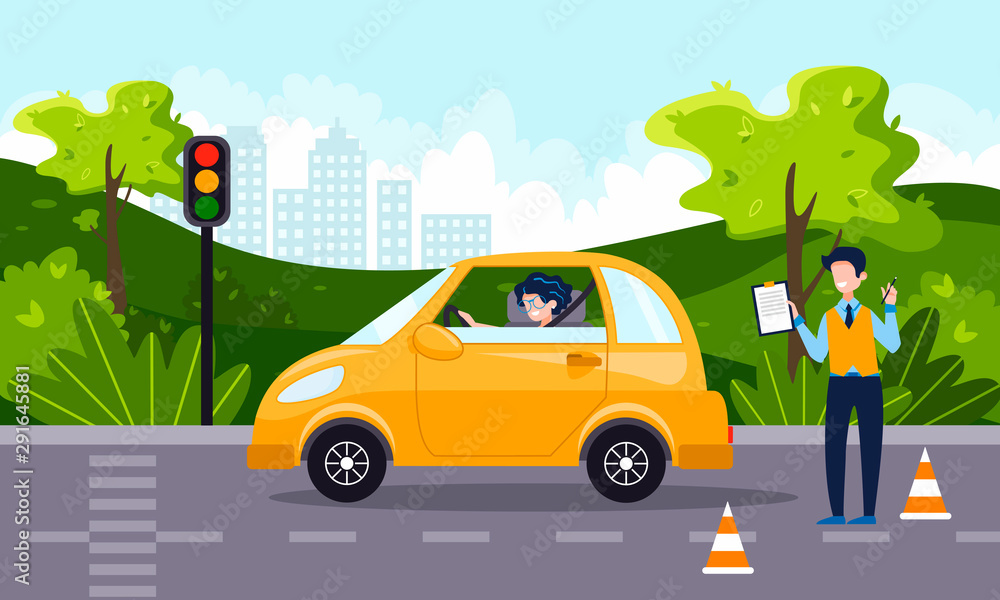For teenagers, getting a driver’s license is often seen as a milestone symbolizing freedom and independence. However, learning to drive is more than just a rite of passage—it’s a serious responsibility that requires proper training, awareness, and preparation. Pre-license lessons are critical for ensuring that aspiring teen drivers not only pass their driving test but also develop the skills and habits needed to stay safe on the road. In this article, we’ll explore key pre-license lessons that help teens steer toward driving success.
Understanding the Basics: Vehicle Knowledge and Control
Before hitting the road, it’s essential for teen drivers to develop a solid understanding of the vehicle itself. Learning the basic controls, dashboard indicators, and mechanics of the car are crucial elements that often get overlooked in the excitement of driving.
Key Areas to Focus On:
- Dashboard Lights and Indicators: Teens should understand what each symbol on the dashboard represents—such as the check engine light, oil pressure, and fuel gauge—to avoid unnecessary risks while driving.
- Pedal Control: Mastery over the accelerator, brake, and clutch (for manual cars) is a fundamental skill. Pre-license lessons should emphasize smooth acceleration and controlled braking to build muscle memory.
- Steering and Mirror Adjustments: Proper steering control and setting side and rearview mirrors to eliminate blind spots are critical for safe driving.
Getting familiar with the vehicle helps teens gain confidence behind the wheel, setting the stage for smooth learning on the road.
Defensive Driving Techniques: Anticipating Hazards
Teen drivers are often less experienced in dealing with unpredictable situations on the road. Defensive driving techniques are designed to help young drivers anticipate and react to potential hazards, ensuring they stay safe in various driving environments.
Key Defensive Driving Lessons:
- Maintaining a Safe Following Distance: Teach teens the three-second rule, which ensures that there’s enough distance between them and the car in front to react safely in case of sudden stops.
- Scanning the Road Ahead: Encourage teens to constantly scan the road for potential hazards such as pedestrians, cyclists, or sudden changes in traffic flow. Anticipating what’s ahead can help prevent accidents.
- Reacting to Weather Conditions: Teens should learn how to drive in adverse weather conditions, such as rain or fog, which require slower speeds and greater caution.
Defensive driving lessons are vital in helping teens not only pass their driving test but also become more cautious, proactive drivers.
Mastering the Road Test Skills: Preparing for the Exam
The road test is the final step before earning a driver’s license, and it can be a nerve-wracking experience for many teens. Preparing for the test involves mastering specific driving maneuvers and following traffic laws strictly.
Key Road Test Skills:
- Parallel Parking: This is one of the most challenging maneuvers for new drivers, but regular practice will make it less intimidating. Teens should practice parking in tight spaces while ensuring proper use of mirrors and signals.
- Proper Use of Turn Signals: Understanding when and how to use turn signals is crucial during the road test. Teen drivers must signal at least 100 feet before making a turn or lane change.
- Yielding and Right of Way: Knowing when to yield and understanding who has the right of way at intersections are vital test components. Many road test errors stem from confusion around these rules.
By focusing on these key skills, teens can feel more confident and prepared to ace their road test and earn their driver’s license.
Road Etiquette and Communication: Respecting Others on the Road
Learning how to communicate effectively with other drivers and follow proper road etiquette is another key aspect of driving success. Being courteous and aware of others can prevent accidents and improve overall road safety.
Important Road Etiquette Tips:
- Using Turn Signals Properly: Proper use of turn signals not only helps teens pass their driving test but also keeps other drivers informed of their intentions.
- Being Aware of Pedestrians and Cyclists: New drivers should always yield to pedestrians at crosswalks and give cyclists enough room on the road.
- Avoiding Aggressive Driving: Teens should be taught to stay calm and patient behind the wheel, avoiding aggressive maneuvers such as tailgating, speeding, or weaving in and out of traffic.
Road etiquette is crucial for building a respectful and safe driving culture, especially for young drivers who are just starting their journey on the road.
Understanding Traffic Laws: Staying Within Legal Boundaries
In addition to practical driving skills, teens must also have a firm understanding of traffic laws to ensure they drive within legal limits and avoid tickets, fines, or accidents.
Key Traffic Laws for Teens to Know:
- Speed Limits and School Zones: Adhering to posted speed limits is not just important for passing the road test—it’s a critical safety measure. Teens must pay special attention to reduced speed limits in school zones and residential areas.
- Seat Belt Usage: Always wearing a seatbelt is a non-negotiable rule. New drivers should be reminded that seat belts save lives, both for themselves and their passengers.
- Driving Under the Influence: Teens must understand the severe consequences of driving under the influence of alcohol or drugs, which not only endangers lives but also results in license suspension and legal penalties.
Knowing and following traffic laws is a key part of responsible driving and can prevent legal issues down the road.
Conclusion: The Road to Safe Driving Starts Early
Pre-license lessons are essential for developing responsible, confident, and skilled teen drivers. By focusing on vehicle control, defensive driving, road test preparation, road etiquette, and a deep understanding of traffic laws, teens can gain the knowledge they need to drive safely and successfully. As they embark on this important journey, it’s crucial to emphasize that driving is both a privilege and a responsibility.












